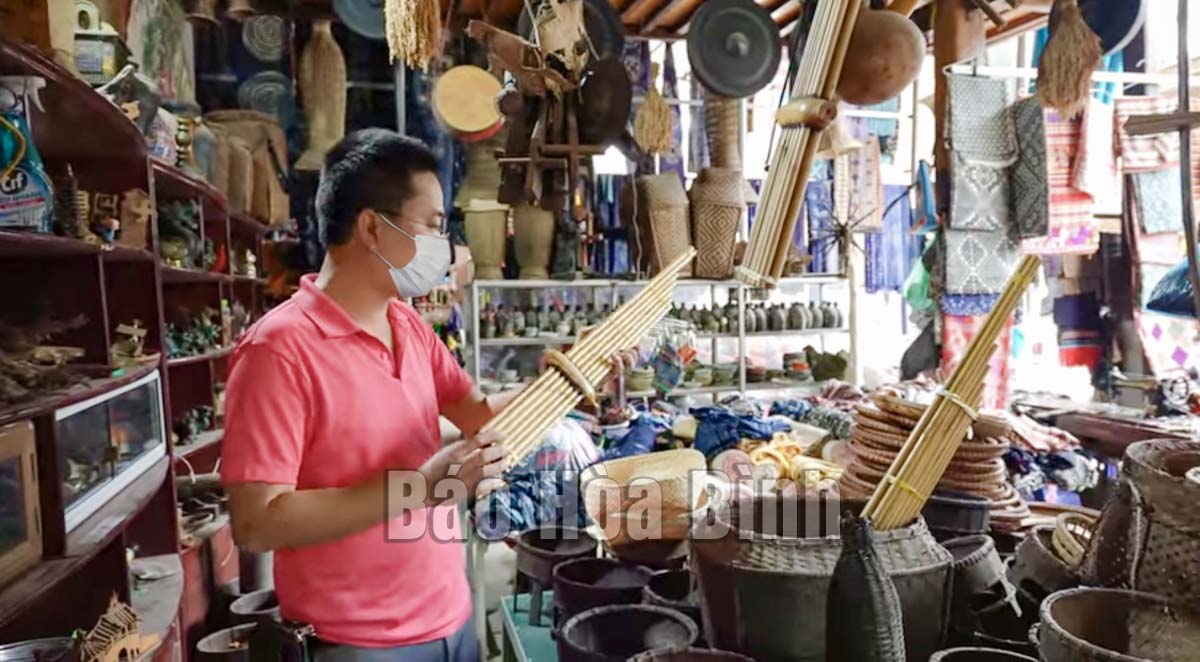(HBO) – The brocade weaving of the Thai ethnic group in Mai Chau district is a long-standing craft which has become a cultural identity of local people. Inheriting and upholding the craft’s quintessence, added with their creativity and subtlety, Thai women in Chieng Chau commune have created new products which still combine both traditional and modern features. Thanks to that, Chieng Chau brocades have become popular items attracting buyers in other localities as well as foreigners.
A tourist visits a booth of ethnic products in Lac
village of Chieng Chau commune, Mai Chau district.
Established in 2013, the Chieng Chau brocade
weaving and service cooperative in Chieng Chau commune firstly made such
products as towels, fabrics, and traditional costumes to serve local Thai
people in Mai Chau district. The development of local tourism has boosted travellers’
demand for these items, creating a driving force for local Thai residents to
boost production.
In the past, brocade products were mainly
blankets, mosquito nets, scarves, pillows, and clothes. At present, to meet
customers’ demand, the cooperative has created new items like handbags,
footwear, stuffed animals, and small souvenirs. Notably, its brocades are still
made from natural cotton fibres and have production steps carried out manually,
from spinning fibres, dyeing to weaving, requiring meticulousness. Machinery is
only used to put final touches to products.
With the hope of making Mai Chau brocades,
including those of the cooperative, be known far and wide in new markets,
especially foreign ones, the cooperative has involved its apparel and souvenirs
in Phase 2 of the "One Commune, One Product” (OCOP) programme since 2020.
Vi Thi Oanh, deputy director of the cooperative,
said her cooperative always hopes that with diverse and eye-catching designs
and practicality, locally-made brocades can gain a foothold in the market.
Therefore, it has continually created new products matching the taste of
different groups of customers.
Tran Manh Tan, deputy head of the agriculture
and rural development division of Mai Chau district, said in 2020, handmade
brocade products of the brocade weaving and tourism service cooperative in Lac
village, Chieng Chau commune, were rated four stars in the OCOP proramme. This
is a chance for the cooperative to continue developing their brands and expand
the market, and it is also an encouragement for other production establishments
to have right development directions to turn brocades into a tourism product.
To assist this cooperative to have the best
products for the OCOP Programme, the district’s authorities provided it with
150 million VND (6,600 USD) in financial assistance last year, he added.



